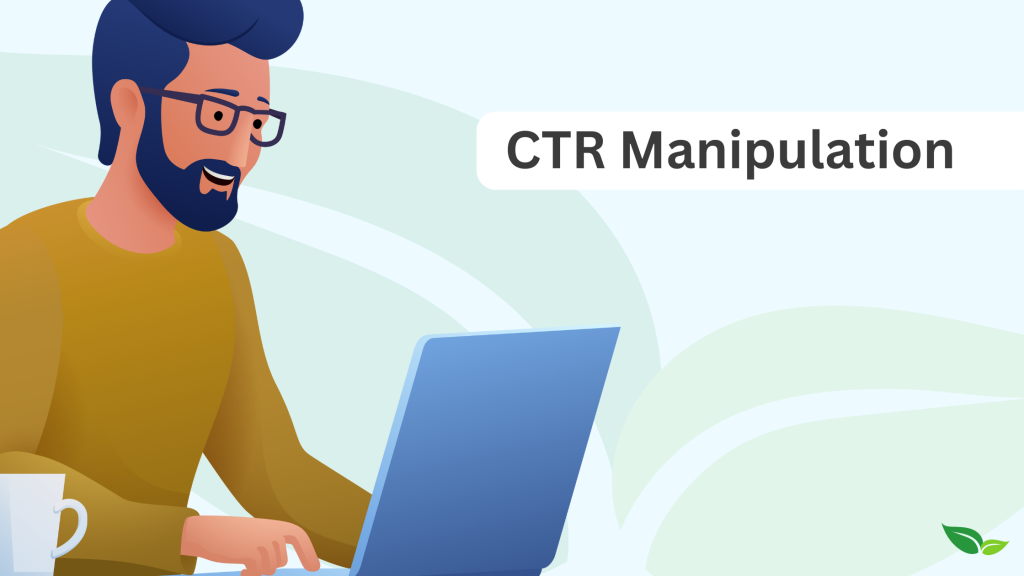Transform Your Ad Campaigns With Targeted CTR Control
Effective advertisement campaigns hinge on the complexities of click-through rate (CTR), an important metric that reflects target market interaction. Targeted CTR adjustment, notified by data analytics, provides an opportunity to refine just how ads attach with prospective consumers.
Recognizing Click-Through Price
What makes a click-through rate (CTR) a vital metric in electronic advertising? A high CTR recommends that the advertisement is appealing and pertinent, while a low CTR indicates a need for optimization.
Comprehending CTR enables marketing professionals to assess the performance of different campaigns, advertisement styles, and targeting strategies. It enables benchmarking versus sector criteria, supplying insights into locations that may need improvement. Additionally, CTR plays an important function in search engine optimization (SEO) and pay-per-click (PPC) advertising, influencing top quality scores and total exposure in search results page.
Significance of Targeted CTR

Moreover, targeted CTR adjustment allows marketers to refine their approaches based on audience habits and choices. By analyzing information, businesses can recognize which sections respond favorably to specific material types and readjust their projects appropriately. This precision causes more impactful messaging and higher conversion prices.
Additionally, targeted CTR fosters brand name loyalty. In summary, the value of targeted CTR lies in its ability to not only enhance project efficiency but likewise to create purposeful links with target markets, paving the means for sustained growth and success.
Techniques for CTR Manipulation
Just how can marketers successfully control click-through prices (CTR) to achieve preferred outcomes? A number of techniques can be employed to boost CTR, consequently taking full advantage of the effectiveness of ad campaign.

Second, making use of appealing visuals can significantly influence CTR. Premium pictures or video clips that straighten with the advertisement's message can attract interest and punctual individuals to click. Furthermore, leveraging advertisement positioning purposefully on systems where the target market is most energetic can boost presence and communication rates (GMB CTR Manipulation).
Third, personalizing ads based on user actions and preferences can generate much better outcomes. Utilizing retargeting strategies, marketers can remind potential consumers of services or items they previously watched, therefore read this post here enhancing the chance of clicks.
Finally, enhancing for mobile is vital, as a substantial portion of internet website traffic originates from mobile gadgets. Guaranteeing advertisements are mobile-friendly can lead to boosted CTR and overall campaign efficiency.
Studying Audience Habits
Understanding audience habits is crucial for online marketers see here now intending to enhance click-through prices (CTR) and total campaign effectiveness. By delving right into the motivations, choices, and on-line practices of target audiences, online marketers can tailor their campaigns to reverberate more deeply with potential customers.
Assessing audience actions involves several crucial components, including demographic analysis, psychographic profiling, and customer trip mapping. Market evaluation supplies insights right into age, revenue, gender, and area, which can educate the design and messaging of advertisements. Psychographic profiling, on the other hand, reveals values, rate of interests, and way of livings, allowing marketing professionals to develop web content that aligns with target market goals.
User journey mapping is crucial for understanding how possible clients interact with numerous touchpoints, from first recognition to last conversion. By determining the stages where target markets disengage or engage, online marketers can maximize their strategies to improve CTR.

Gauging Project Success
Determining campaign success is a vital part of any advertising method, as it offers the essential insights to assess efficiency and drive future decisions. To successfully evaluate success, marketing experts have to establish clear, measurable goals aligned with overarching service objectives. Trick performance indicators (KPIs), such as click-through rates (CTR), conversion prices, and roi (ROI), function here as essential metrics in this process.
Tracking CTR particularly permits marketers to examine the performance of targeted advertising campaign. A high CTR suggests that the advertisement reverberates with the audience, while a low CTR may necessitate a reevaluation of targeting parameters, innovative components, or messaging techniques. In addition, evaluating conversion prices uses much deeper insights into just how well a campaign drives wanted activities, such as sign-ups or purchases.
Leveraging analytics tools can additionally boost measurement efforts, making it possible for real-time data tracking and modifications. Frequently assessing campaign efficiency against developed standards makes sure continuous renovation and optimization. Eventually, a durable measurement technique not just highlights successes but also uncovers locations for improvement, leading the way for more impactful and effective advertising campaigns in the future.
Final Thought
Finally, transforming advertising campaign with targeted click-through price (CTR) adjustment demands an extensive understanding of target market behavior and effective messaging strategies. By employing data-driven approaches, consisting of A/B screening and tailored visuals, projects can attain greater engagement and conversion rates. Assessing psychographic and market understandings additionally boosts the ability to get in touch with the audience. Eventually, these techniques add to increased brand commitment and made best use of roi, underscoring the importance of targeted CTR control in digital advertising and marketing.
Effective advertisement projects hinge on the complexities of click-through rate (CTR), an essential statistics that shows target market involvement. A high CTR recommends that the advertisement is appealing and appropriate, while a reduced CTR suggests a need for optimization.
In summary, the relevance of targeted CTR lies in its ability to not just improve campaign effectiveness but additionally to create significant links with target markets, leading the means for sustained growth and success.
A high CTR suggests that the ad reverberates with the audience, while a reduced CTR may demand a reevaluation of targeting specifications, imaginative aspects, or messaging methods.In final thought, transforming ad campaigns via targeted click-through price (CTR) manipulation requires a detailed understanding of target market habits and effective messaging techniques.